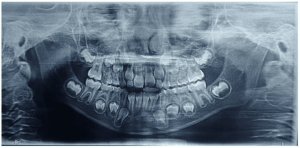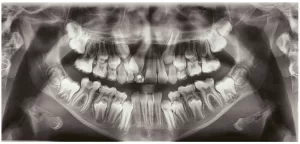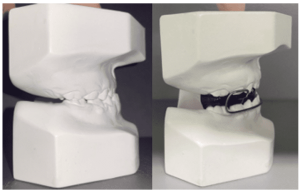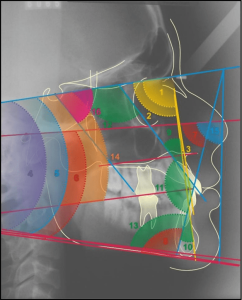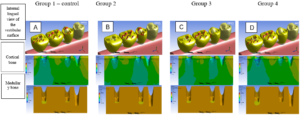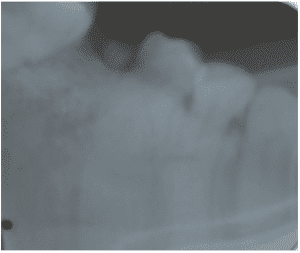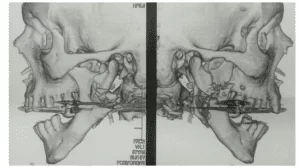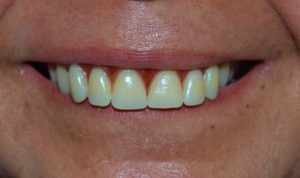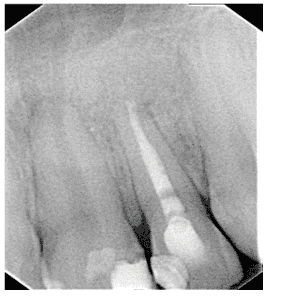REVIEW ARTICLE
MARTINS, Gleicimar Fernanda de Oliveira [1], RELVAS, Adriano [2], LEFRANÇOIS, Mauro [3], AZEVEDO, Marcos Venício [4], SOTELO, Pablo [5], SOTELO, Laura [6]
MARTINS, Gleicimar Fernanda de Oliveira. Et al. Digital impressions in total rehabilitations: the accuracy of digital impression techniques and digital workflow – a literature review. Revista Científica Multidisciplinar Núcleo do Conhecimento. Year 06, Ed. 04, Vol. 03, pp. 166-183. April 2021. ISSN: 2448-0959, Access link: https://www.nucleodoconhecimento.com.br/dentistry/digital-workflow
ABSTRACT
Introduction: Impression for complete rehabilitation (CR) on implants can be complex and presented in a variety of limitations, including, dimensional stability of impression materials, limited mouth opening, patient nausea, among others. Objective: To solve these problems and propose a new technique, this study conducted a literature review on the precision and trueness of digital impressions in CR, the adaptation of the infrastructures manufactured after digital impressions and the digital workflow. Data sources: The databases of Pubmed, Scielo and Google Scholar were searched using the following terms: digital impression; conventional impression; intraoral scanner; impression accuracy; full-arch implant impressions. Synthesis of data: In total, 55 studies were selected. After the application of a 10-year post-publication limit, based on the inclusion and exclusion criteria and following a full reading of the papers, 31 were included in this study. Conclusion: intraoral scanners (IOS) have good precision and trueness; their use seems to be a good option for implant-supported. The development of scan bodies provides reference objects for the composition of images, which contributes to improvements in precision. The use of intraoral scanners is advantageous for dental surgeons due to providing comfort to the patient and less fatigue to the operator, saving space, money and time, better communication with the laboratory, easy detection of scanning errors and quick solution, efficiency of record keeping and excellent marketing tool, among others. According to this literature review, the most accurate scanners were True Definition (3M Spee) and Trios (3Shape).
Descriptors: Dental Impression Technique, CAD-CAM, Denture, Complete.
1. INTRODUCTION
According to the last National Oral Health Survey carried out in 2010 (Brasil.aaaa 2010) it is estimated that 23.9% of the elderly between 65 and 74 years old need a denture in at least one jaw and 15.4% need a double prosthesis (BRASIL, 2012). And according to a more recent survey by IBGE (Brazilian Institute of Geography and Statistics), carried out in 2019, it is estimated that 8.9% of the Brazilian population lost all teeth (IBGE 2019). The different regions of Brazil need public health policies both with regard to training professionals in rehabilitation procedures, and in strategies to prevent tooth loss (TELLES, 2010). The data for global edentulism may differ from country to country, even among those with similar geopolitical characteristics.
The impression for a full prosthesis seeks the negative reproduction of the alveolar edges of tissues, which constitute the area where the prosthesis will be laid (BOUCHER et. al., 1970). The regular pressure exerted by the prostheses on the oral tissues acts as a biological stimulus necessary for the maintenance of the health of the hard tissues and mucosa. On the other hand, excessive pressure can produce injuries that will negatively influence the maintenance and health of tissues (NAGLE et. al., 1965). The use of overdentures and implant-supported dentures has been widely used as an alternative to conventional dentures. The imprecise position of the implant in the mold makes it impossible to craft a well-fitting prosthesis and the result of this mismatch can lead to biomechanical complications such as screw loosening, bone loss and fracture of the ceramic veneer because of increased stress within the prosthesis or in the implant and bone interface (ALIKHASI et. al., 2018; PAPASPYRIDAKOS et. al., 2014).
Manufacturing well-fitting prostheses, whether fixed or removable, requires the use of impression materials that faithfulness record the prepared teeth and/or the position of implants, in addition to their relationship with the adjacent oral structures (BELL et. al., 1975; ANUSAVICE et. al., 2013).
However, conventional impression materials have factors that affect their dimensional stability such as polymerization contraction, loss of condensation reaction by-products, thermal contraction, water absorption from the medium and incomplete deformation recovery (BELL et. al., 1975), incorrect product storage, disregard for the expiration date, incorrect handling and disinfection, ideal time for leakage and improper transport of the mold (BELL et. al., 1975; MEZZOMO e SUZUKI 2006). About 89.1% of the molds have one or more types of detectable errors (SAMET et. al., 2015).
Moreover, some clinical inconveniences have been reported regarding patients’ self-perception of clinical protocols, such as: anxiety, taste, nausea, longer clinical time, risk of choking and taste irritation (JODA et. al., 2016). Many conventional impression techniques used today are relatively difficult to perform, time consuming, operator-sensitive and uncomfortable for patients (PESCE et. al., 2018).
The development of implant dentistry and the consequent use of impression materials in this area, previously used only in fixed dentures on teeth, renewed the need for new studies to assess the accuracy and dimensional stability of conventional impression materials. (DI FIORE et. al., 2015). Since 1990, studies on implant transfer moldings with different conventional molding techniques have been showing non-homogeneous results regarding the replication and exact location of implants (GIMÉNEZ et. al., 2015).
The open tray technique with splinted transfers is the most cited in the literature. However, it has some disadvantages such as imprecise tray positioning caused by vertical or rotational discrepancies, application difficulties in patients with limited mouth opening (ÖZÇELIK et. al., 2018), and the impossibility of reproducing the exact position of the implants in a plaster model, even using standardized conditions (ÖNGÜL et. al., 2012).
To solve such problems inherent to impression materials and improve clinical practicality, new brands of intraoral scanners have been developed and successfully introduced in the dental market (LOGOZZO et. al., 2012). The increase in precision, efficiency and ease of handling seems to be the explanation for the increased use of these tools in dental practice, in addition to allowing the production of precise restorations without some unpleasant aspects of traditional impression materials (PESCE et. al., 2018; ENDER e MEHL, 2011).
In this context, the digital intraoral impression, also known as digital scanning, consists of optically measuring the shape and design of the target directly in the patient’s mouth to generate digital files, thus providing the three-dimensional digital model. These files provide data on the tooth surface, the shape of the gum, the antagonistic teeth and even the occlusion ratio. All information captured is processed and converted into stereolithographic data (STL), which will later be used to design the CAD (Computer Aided-Design) restoration or infrastructure design for later 3D printing or milling in the CAM (Computer Aided-Manufacturing) system (SUESE, 2020).
Recently published studies on the accuracy of intraoral scanners show comparable or even better precision when compared with conventional impression methods (ENDER e MEHL, 2011; PAPASPYRIDAKOS et. al., 2016; PAPASPYRIDAKOS et. al., 2015).
The terms “trueness” and “precision” represent different measures of accuracy. Trueness is defined as the comparison between a control group’s STL data set and the test group’s STL data set. On the other hand, precision (reproducibility/repeatability) is defined as the consistency of the device to obtain identical results in repeated scans (ENDER e MEHL, 2011; ENDER e MEHL, 2015; AMIN et. al., 2017).
Some newer models of intraoral scanners (IOS) provide images with safe records regarding the color of teeth and gums. Older models do not have this advantage, requiring titanium dioxide powder on the area to be scanned. In this case, all information captured will be monochromatic. Although this may seem like a disadvantage, the presence of the dust can suppress metallic reflections and maintain stable scanning conditions. In other words, IOS is an advanced substitute for conventional techniques for impression and reproducing plaster models (SUESE, 2020).
The intraoral scanning of edentulous patients seems to improve patient acceptance, reduce possible distortions related to impression materials, allow the preview of the three-dimensional virtual model, decrease potential cost, and increase efficiency. In implantology, digital impressions would allow virtual assessments of the prosthetic environment, the restoration interface and the configuration of the emergency profile before continuing with the laboratory steps (GIMÉNEZ et. al., 2020).
However, the literature is yet to provide a consensus on the trueness and precision of intraoral scans and their applications in fully edentulous patients. Therefore, our study aims to compare, through a literature review, the accuracy of digital impression techniques in total rehabilitation regarding precision, trueness and digital workflow.
2. DATA SOURCES
Electronic searches between 2010 and 2020 were conducted using the U.S National Library of Meidicine/National Institutes of Health search portal (PubMed), Scielo and Google Scholar. The searched terms were “digital impression, conventional impression, intraoral scanner, impression accuracy, full-arch implant impressions” limited to the text words field. The search strategy used was (digital impression OR conventional impression OR intraoral scanner OR impression accuracy OR full-arch implant impressions). A 10-year publication filter was applied. It was verified by one review author (GFOM) if titles and abstracts of the studies identified through the research strategy were appropriate to the objectives of this study and followed the selection criteria. The studies were selected according to the following criteria:
- Studies published in the last 10 years;
- Studies published in the English language;
- In vitro or in vivo studies (clinical trials, case-control, case reports);
- Literature reviews and meta-analyses.
Initially, 55 references were retrieved from PubMed, Scielo and Google Scholar. After the application of a 10-year post-publication limit, 51 papers remained, and based on the inclusion and exclusion criteria, 40 studies from PubMed were selected. Following a full reading of the papers, 31 were included in this study. Articles and books outside this search methodology were used to compose the introduction.
3. SYNTHESIS OF DATA
In recent years, new brands and new technologies have been developed and successfully introduced to the dental market (LOGOZZO et. al., 2014; RICHERT et. al., 2017). The IOS and the CAD-CAM system provide easier and faster planning and treatment, increase the acceptance of the case, improve communication with the laboratory and reduce the need for physical space for the storage of models (RICHERT et. al., 2017).
There was a consensus in the literature regarding the indication of digital impression on dental prosthesis, restricting it to application in fixed unitary prosthesis or in small extension fixed prostheses, both on teeth and on implants, under the justification of decreasing precision the larger the area to be digitized (ENDER e MEHL, 2015; AMIN et. al., 2017). Currently, this statement cannot be considered an absolute truth, since out of 21 studies analyzed, which compared digital impression with conventional ones in one way or another, 14 pointed to digital scanning as a precise and reliable technique for impression of totally edentulous patients for construction of implant-supported or implant-mucosal supported prostheses of the Bränemark protocol, All-On-Four protocol type and bar-clip overdenture (ALIKHASI et. al., 2018; PESCE et. al., 2018; PAPASPYRIDAKOS et. al., 2015; PAPASPYRIDAKOS et. al., 2015 AMIN et. al., 2017; ABDEL-AZIM et. al., 2014; PAPASPYRIDAKOS et. al., 2020).
4. AVAILABLE IOS SYSTEMS ON THE MARKET
Considering that intraoral scanners belong to a new science and are in development, the result of a given study on digital impression cannot be extrapolated as unanimity most of the time, since new scanners are continuously surfacing on the market, with the need to compare them.
More than 20 IOS models are commercially available worldwide. They are classified as stand-alone or scanning platforms with CAD/CAM solutions. Autonomous IOS process intraoral scanning data in 3D models as image files or complete the design of the prosthetic device using CAD software, so that the user can forward the data to the laboratory. The second type is the so-called “one-day treatment” device, capable of immediately designing prosthetic devices with the 3D model data of the optical impression obtained by IOS. The prosthetic part is completed on the same day with a milling machine or printer connected to the device (SUESE, 2020).
The need for opacification, scanning speed, scanning camera dimensions and the possibility of obtaining color images are characteristics that differ each system from one another. Technically, IOS can be integrated into a closed system, generating only proprietary files, or it can be opened, producing STL files. The later one is very versatile (MANGANO et. al., 2017; VANDEWEGHE et. al., 2017).
Some authors have been studying and comparing the different types of IOS. Vandeweghe et. al. (2017) compared 4 intraoral scanners (Lava COS, True Definition, Trios 3Shape and Cerec Omnican) and concluded that there was no significant difference between True definition and Trios 3Shape. Cerec Omnicam was less accurate than these were but demonstrated acceptable values. Lava Cos had the worst averages and was therefore considered unsuitable for digital impressions of full-arch implants. For Amin et al. ( 2017), the True Definition system was even more accurate than OmniCam. Di Fiore et al. (2019), compared eight IOS (True Definition; Trios; Cerec Omnicam; 3D progress; CS3500; CS3600; Planmeca Emelard and Dental Wings) and concluded that True Definition and Trios 3Shape, Cerec Omnicam and CS3600; and CS3500 and Planmeca Emelard had no significant difference.
In general, studies show that not all scanners can be used for full-arch impressions when the goal is to obtain fixed implant-supported prostheses.
5. PRECISION AND TRUENESS
If the use of IOS starts to become unanimous in cases of single crowns, inlays/onlays, copings and infrastructures of fixed partial dentures with little extension over natural teeth and implants, some studies contraindicate them in more complex cases (fixed partial dentures with five abutments, total prostheses, and mucosal-supported prostheses) (MANGANO et. al., 2017).
However, there is another aspect in the literature that seeks to prove the efficiency of IOS for digital impressions in obtaining implant-supported total prostheses, and it is possible to find several studies with different methodologies providing better or similar results when compared with conventional impression (ALIKHASI et. al., 2018; PESCE et. al., 2018; PAPASPYRIDAKOS et. al., 2016; PAPASPYRIDAKOS et. al., 2015; AMIN et. al., 2017; ABDEL-AZIM et. al., 2014; PAPASPYRIDAKOS et. al., 2020).
In the last few years, the dental implant industry has developed and integrated with the new needs of the market. Considering that some factors can interfere with the precision of conventional impressions, as mentioned above, intraoral digitization has been presented as a viable option to remedy such problems and still add advantages that, until now, were impossible to achieve.
Given this context, these industries have developed tools that facilitate the use of intraoral scanners within implantology such as the introduction of scan bodies. Some recent studies have shown that intraoral scanning of dental implants appears to be at least as accurate as conventional impression (WISMEIJER et. al., 2014). Moreover, planning and manufacturing implant-supported metal bars with good clinical precision is now possible with the newest generation of IOS and using the CAD-CAM system. In this case, the acquisition of extraoral images also represents a great advance since they allow the bar to be designed according to the available prosthetic spaces and in relation to the surrounding tissue volumes (MANGANO et. al., 2019)
In search of scientific validation of IOS use in a totally edentulous arch, some authors have proven the precision and trueness of digital impressions compared to conventional ones using a stereomicroscope, and/or clinical and/or radiographic evaluation of the marginal adaptation of prostheses or infrastructure on implants (PESCE et. al., 2018; ABDEL-AZIM et. al., 2014; MONACO et. al., 2018; CAPPARE et. al., 2019).
Other studies used the three-dimensional or linear location of the implants/analogs to perform the precision comparison between both techniques. The data obtained for three-dimensional localization generate STL (Standard Tessellation Language) files, a standardized file format of 3D software that describes the three-dimensional geometry of an object surface (RECH-ORTEGA et. al., 2019). The files generated in the test group are superimposed on the files generated in the control group and the trueness of the digital impression is evaluated.
Ideally, an intraoral scanner should be as accurate and precise as possible, providing consistent results regardless of the scanning conditions. This would make digital impression highly predictable and thus expand the adoption of this technology in clinical routine (GIMENEZ-GONZALEZ et. al., 2017).
However, there are reports of limitations regarding the reproducibility of IOS, since there are factors that could generate a failure in the coordinate system such as unpredictable movements of the operator, a situation that does not exist in the extraoral scanner and affect the digital adjustment of images and the use of titanium oxide powder, which could influence the trueness and repeatability (precision) of digital impression (TING-SHU e JIAN 2015; GIMENEZ-GONZALEZ et. al., 2017). On the other hand, more recent studies claim that IOS has high reproducibility (Suese, 2020) and several studies have shown that digital impression of implants are as accurate as conventional impression (PAPASPYRIDAKOS et. al., 2016; PAPASPYRIDAKOS et. al., 2015; AMIN et. al., 2017; MOURA et. al., 2019).
Some studies have pointed out less accuracy of the intraoral digital technique when compared to the conventional open tray molding technique (RECH-ORTEGA et. al., 2019; KIM et. al., 2019). However, they used different methodologies from the studies that show good results. Such as: the non-use of prosthetic intermediates and the method of comparison between the control group and the test group using coordinate measuring machine. Therefore, they did not work with STL image overlay. Factors that could justify the contrast of results found.
In contrast, other studies recognize the difficulty in obtaining perfect adaptation between implants and prosthetic intermediates, thus establishing an acceptable degree of mismatch. For Bränemark, this tolerance should be less than 10μm, but other authors consider intervals between 30 and 150μm acceptable, although the exact amount of static stress accepted by the peri-implant bone caused by the misfit of a prosthetic part remains unknown. In view of these references, all the values found by Rech-Ortega et al. Are within the tolerance range established in the literature and, therefore, could be considered clinically acceptable, without contraindicating the use of digitizing the models (RECH-ORTEGA et. al., 2019).
Overlapping studies of STL images that compare conventional physical models to those obtained by 3D printing in CAM system are also an option. Papaspyridakos et al.( 2020) concluded that the 3D deviations of the printed models based on full-arch scans had significant differences compared to the master model, however, the error range was still within the acceptable values for clinical application.
In Vivo studies that assess the survival rate of implants and fixed prostheses installed cite 100% success rates (GHERLONE et. al., 2020; GHERLONE et. al., 2016; CAPPARE et. al., 2016).
. In general, they found no statistical differences regarding marginal bone loss between patients that received prostheses after conventional or digital impression. Moreover, no patient presented infection-related signs or symptoms (GHERLONE et. al., 2020; GHERLONE et. al., 2016; CAPPARE et. al., 2016).
6. AND TECHNICAL CONSIDERATIONS
Just as the conventional impression has factors that can affect the precision, the digital scans can also present clinical variables, such as angulation, depth of the implants, use or not of prosthetic intermediates and types of implant platform.
There is no consensus in the literature on the implant angulation factor. Some results indicate that the amount of angulation would affect the precision of digital impressions (PAPASPYRIDAKOS et. al., 2014; RUTKUNAS et. al., 2017), others say that depends on the degree of angulation (PAPASPYRIDAKOS et. al., 2016) or that the variation in the angle of the implants could not change the precision of the techniques (ALIKHASI et. al., 2018; GIMÉNEZ et. al., 2015; MOURA et. al., 2019; GIMENEZ-GONZALEZ et. al., 2017).
Regarding the depth of the implants, Gimenez et. al. (2015) state that it does not seem to decrease the impression precision for the tested IOS. However, for Gimenez-Gonzalez et. al. (2017) implants placed at the gingival level had less scanning deviation than implants installed under the gingiva, so depth would affect precision. They also stated that the visible portion of the digitizing body can compensate for this difference in depth, so longer bodies are recommended in cases of deeper implants. In addition to the angle and depth of the implants, other factors such as the distance from the implants and the operator’s experience could affect the precision of the result of digital impression (RUTKUNAS et. al., 2017).
Regarding the type of connection, Papaspyridakos et. al. (2017) reported that studies would be insufficient to assess its effect on print precision. However, the current consensus seems to understand that within the digital method there is no significant difference for different connections. Therefore, the connection would not interfere with precision when the digital technique is employed (ALIKHASI et. al., 2018; PAPASPYRIDAKOS et. al., 2016; PAPASPYRIDAKOS et. al., 2015).
In addition to clinical variables, there is also evidence that some technical factors may affect the outcome of a digital impression, e.g., the operator’s experience. Therefore, more experienced operators would deliver more accurate digital scans than inexperienced ones. The technique requires a high degree of training, but the learning curve seems favorable (GIMÉNEZ et. al., 2015; SUESE, 2020; GIMENEZ-GONZALEZ et. al., 2017).
However, if we compare it with the conventional technique, we will also see this learning curve, since it is known that the quality of the impressions improves with the operator’s experience.
To indicate or contraindicate an impression system, either analog or digital, we must consider not only the precision, but also the patient’s preference, the social reality of the service region, the impossibility of a patient being molded and others.
Studies reported that patients preferred the perception and safety of the technique with intraoral scanning (JODA e BRÄGGER 2016; WISMEIJER et. al., 2014; AHLHOLM et. al., 2018), mainly due to the taste on analog impression and the preparation of the activities involved. However, the opinion of these patients may vary according to the IOS type or the use of titanium dioxide powder. Regarding the bite record, the size of the intraoral reading chamber and the vomiting reflex, the patients’ perception tended positively towards the intraoral scanner, without a significant difference (WISMEIJER et. al., 2014). From the operator’s point of view, IOS is a less invasive option for patients (CAPPARE et. al., 2019).
The time spent when using IOS should also be evaluated. The speed of exploration and image acquisition does not depend only on the device, but largely on the clinical experience of the operator and the size of the scanner tip (AMIN et. al., 2017). There seems to be a consensus that under certain conditions digital scans can significantly reduce impression time when compared with conventional approaches that use impression materials and impression trays (JODA e BRÄGGER 2016; GHERLONE et. al., 2016; CAPPARE et. al., 2019; MANGANO et. al., 2017; AHLHOLM et. al., 2016). However, a study reported less time spent when using the analogue technique than when using the digital method. This could be explained based on the operator’s experience theory, since inexperienced operators could need more implant scans. Another explanation would be a clinical situation in which a large surface was scanned by IOS (WISMEIJER et. al., 2014).
7. ADVANTAGES AND DISADVANTAGES
Compared to conventional impression, digital intraoral scanning saves time, since it reduces clinical and laboratory steps such as tray selection, handling and distribution of impression material on the tray, mold disinfection time, packaging and transportation, casting plaster, plaster cutout, articulation and extraoral scanning.
The literature cites several advantages of using digital impression over the conventional one besides time, such as: reducing pain and patient discomfort; reduction of cost and waste of materials by using image management and digital archiving, real-time tracking and visualization of the model, better communication with the dental laboratory technician (SUESE, 2020; MANGANO et. al., 2017). simplification of complex cases of conventional impression and clinical procedures for the dentist MANGANO et. al., 2017). Reduced load for the operator and the risk of cross contamination, simple replication and selective tracking, virtual follow-ups, detection of caries and dental fissures/fractures, application in special patients and even in legal dentistry (SUESE, 2020). It is worth adding other advantages, such as less waste production for the environment (impression materials after the leak, discarded models, among others), better management of physical space, no paper and efficient record keeping.
However, the detection of the preparation ends with the use of scanners can be difficult when subgingival and/or in cases of gingival bleeding, being an important disadvantage. This is an aspect that also applies to conventional impressions. Moreover, high operator training requires a sharp learning curve. Other disadvantages observed were the need for scanning bodies for scanning in implantology, limited function of the digital technique regarding the reproducibility of occlusal relationships; in addition to the costs of managing and purchasing devices and technologies (SUESE, 2020; CAPPARE et. al., 2019).
8. FUTURE SCOPE
IOS can be used in many other procedures than simple digital impression. The intraoral scanner, associated with milling machines, printers, digital planning software and other tools that enable face scanning allow the dental surgeon to develop a digital workflow. The digital flow seems to be a valid option for totally edentulous patients CAPPARE et. al., 2019). Because it proved to be effective in capturing all the information necessary for the manufacture of prostheses on full arch implants (MONACO et.al., 2018; MANGANO et. al., 2019).
This approach offers the possibility of reducing treatment and laboratory time, a less invasive option for patients, delivering efficient aesthetic and functional parameters, in addition to accurately designing the prosthesis structure based on future restorations (MONACO et.al., 2018; CAPPARE et. al., 2019). All treatment is based on the use of digital media, namely: CT scans of the regions to be implanted, surgical guide, scanning of conventional prostheses, intra and extraoral scanning, smile design, design of prosthesis structures, digital model printing, milling or printing of prosthetic structures (either resin or porcelain).
Finally, this is just the beginning of the expansion and use of intraoral scanners. A recent study pointed to the clinical application of IOS in several areas of dentistry, such as diagnosis and digital planning, communication with the patient; in dental prosthesis such as impression prepared teeth and on implants; in implant dentistry in cases of guided surgery; in orthodontics with dental aligners; in the collective health area as a tool to streamline care and record data, in addition to serving as an epidemiological survey of caries, for example; in legal dentistry, regarding the identification of victims of catastrophes or patients with dementia, care for patients with special needs (physical or mental); and periodontics in cases of severe periodontal disease, in addition to contributing to oral health guidance (SAWASE e KUROSHIMA, 2020).
9. CONCLUSION
According to the studies evaluated in this literature review, the most accurate scanners were True Definition (3M Spee) and Trios (3Shape).
The digitization of a totally edentulous arch in total rehabilitation on implants still represents a challenge to Dentistry. Many studies have shown IOS precision and trueness as similar to conventional impression. However, even studies that pointed to conventional impression as superior to digital scan also reported that digital scans are within the norms of clinical applicability. Therefore, its use seems to be a good option in impression of implant-supported total prostheses of the type Branemark and All-On-Four protocol.
However, the poor copy fidelity of the intraoral mucosa adjacent to the implants and extraoral tissues by the scanners and the difficulty of integrating these images with the positioning of the implants have shown to be the greatest obstacle to a fully digital workflow, especially in cases of implant-supported prostheses.
REFERENCES
ALIKHASI, M. et. al. Three-Dimensional Accuracy of Digital Impression versus Conventional Method: Effect of Implant Angulation and Connection Type. International Journal of Dentistry. 2018 Jun 4; 2018:1–9.
ANUSAVICE, K. J. et. al. Materiais Dentários. Rio de Janeiro: Elsevier; 2013.
AMIN, S. et. al. Digital vs. conventional full-arch implant impressions: a comparative study. Clin Oral Impl Res. 2017 Nov;28(11):1360–1367.
ABDEL-AZIM, T. et. al. The Influence of Digital Fabrication Options on the Accuracy of Dental Implant–Based Single Units and Complete-Arch Frameworks. Int J Oral Maxillofac Implants. 2014 Nov;29(6):1281–1288.
AHLHOLM, P. et. al. Digital Versus Conventional Impressions in Fixed Prosthodontics: A Review: Digital vs. Conventional Impressions in Fixed Prosthodontics. Journal of Prosthodontics. 2018 Jan; 27(1):35–41.
BOUCHER, C. O. Swenson, s complete dentures. Saint Louis: Mosby; 1970.
BELL, J. A.; FRAUNHOFER J. A. The handling of elastomeric impression materials: a review. J Dent. 1975; 3(5): 229-37.
CAPPARE, P. et. al. Conventional versus Digital Impressions for Full Arch Screw-Retained Maxillary Rehabilitations: A Randomized Clinical Trial. IJERPH. 2019 Mar 7;16(5):829.
DI FIORE, A. et. al. In Vitro implant impression accuracy using a new photopolymerizing SDR splinting material. Clin Implant Dent Relat Res, 2015 Oct; 17 (2): 721-729.
DI FIORE, A. et. al. Full arch digital scanning systems performances for implant-supported fixed dental prostheses: a comparative study of 8 intraoral scanners. Journal of Prosthodontic Research. 2019 Oct;63(4):396–403.
ENDER, A.; MEHL A. Full arch scans: conventional versus digital impressions, an in Vitro study. Int J Comput Dent. 2011; 14(1)11-21.
ENDER, A.; MEHL A. In-vitro evaluation of the accuracy of conventional and digital methods of obtaining full-arch dental impressions. Quintessence Int. 2015 Jan; 46 (1): 9-17.
GIMÉNEZ, B. et. al. Accuracy of a Digital Impression System Based on Active Wavefront Sampling Technology for Implants Considering Operator Experience, Implant Angulation, and Depth: Accuracy of Digital Impression Methods for Implants. Clinical Implant Dentistry and Related Research. 2015 Jan; 17: 54–64.
GHERLONE, E. F. et. al. Digital Impressions for Fabrication of Definitive “All-on-Four” Restorations: Implant Dentistry. 2015 Feb;24(1):125–129.
GHERLONE, E. et. al. Conventional Versus Digital Impressions for “All-on-Four” Restorations. Int J Oral Maxillofac Implants. 2016 Mar; 31(2): 324–3.
GIMENEZ-GONZALEZ, B. et. al. An In Vitro Study of Factors Influencing the Performance of Digital Intraoral Impressions Operating on Active Wavefront Sampling Technology with Multiple Implants in the Edentulous Maxilla: Clinical Factors Influencing Intraoral Impression Performance. Journal of Prosthodontics. 2017 Dez; 26(8):650–655.
IBGE. Instituto Brasileiro de Geografia e Estatística, 2019. Pesquisa nacional de saúde: percepção do estado de saúde, estilos de vida, doenças crônicas e saúde bucal, perda de dentes. https://cidades.ibge.gov.br/brasil/pesquisa/47/88206.
JODA, T.; BRÄGGER U. Patient-centered outcomes comparing digital and conventional implant impression procedures: a randomized crossover trial. Clinical Oral Implants Research: 2016 Dez; 27(12)185-189.
KIM, K. R. et. al. Conventional open-tray impression versus intraoral digital scan for implant-level complete-arch impression. The Journal of Prosthetic Dentistry. 2019 Dec;122(6):543–549.
LOGOZZO, S. et. al. Recent advances in dental optics – Part I: 3D intra oral scanners for restorative dentistry. Optics and Lasers in Engineering. 2014 Mar; 54: 203-221.
MEZZOMO, E.; SUZUKI R. M. Reabilitação Oral Contemporânea. São Paulo: Editora Santos, 2006.
MONACO, C. et. al. A fully digital approach to replicate functional and aesthetic parameters in implant-supported full-arch rehabilitation. Journal of Prosthodontic Research. 2018 Jul;62(3):383–385.
MOURA, R. V. et. al. Evaluation of the Accuracy of Conventional and Digital Impression Techniques for Implant Restorations: Impression Accuracy Evaluation. Journal of Prosthodontics. 2019 Feb;28(2):530-535.
MANGANO, F. et. al. Combining Intraoral and Face Scans for the Design and Fabrication of Computer-Assisted Design/Computer-Assisted Manufacturing (CAD/CAM) Polyether-Ether-Ketone (PEEK) Implant-Supported Bars for Maxillary Overdentures. Scanning. 2019 Aug; 22(2019):1–14.
MANGANO, F. et. al. Intraoral scanners in dentistry: a review of the current literature. BMC Oral Health. 2017 Dec;17(1):149.
BRASIL. MINISTÉRIO DA SAÚDE. Pesquisa Nacional de Saúde Bucal. Resultados principais. Brasília: Ministério da Saúde; 2012.
NAGLE, R. J. et. al. Prótesis dental – dentaduras completas. Barcelona: Toray; 1965.
ÖZÇELIK, T. et. al. Digital evaluation of the dimensional accuracy of four different implant impression techniques. Nigerian journal of clinical practice. 2018; 21(10): 1247-1253.
ÖNGÜL, D. et. al. A comparative analysis of the accuracy of different direct impression techniques for multiple implants: Implant impression accuracy. Australian Dental Journal. 2012 Jun; 57(2):184–189.
PAPASPYRIDAKOS, P. et. al. Accuracy of Implant Impressions for Partially and Completely Edentulous Patients: A Systematic Review. Int J Oral Maxillofac Implants. 2014 Jul;29(4):836–845.
PAPASPYRIDAKOS, P. et. al. Digital versus conventional implant impressions for edentulous patients: accuracy outcomes. Clin Oral Impl Res. 2016 Apr; 27(4):465–472.
PESCE, P. et. al. Precision and Accuracy of a Digital Impression Scanner in Full-Arch Implant Rehabilitation. Int J Prosthodont. 2018 Mar;31(2):171-175.
PAPASPYRIDAKOS, P. et. al. Digital workflow: In vitro accuracy of 3D printed casts generated from complete-arch digital implant scans. The Journal of Prosthetic Dentistry. 2020 Jan; 1-7.
PAPASPYRIDAKOS, P. et. al. Full-arch implant fixed prostheses: a comparative study on the effect of connection type and impression technique on accuracy of fit. Clin Oral Impl Res. 2015 Sep; 27(9):1099– 41. 1105.
RECH-ORTEGA, C. et. al. Comparative in vitro study of the accuracy of impression techniques for dental implants: Direct technique with an elastomeric impression material versus intraoral scanner. Med Oral Patol Oral Cir Bucal. 2019 Jan1;24 (1): 89-95.
RICHERT, R. et. al. Intraoral Scanner Technologies: A Review to Make a Successful Impression. Journal of Healthcare Engineering. 2017;2017:1–9.
RUTKUNAS, V. et. al. Accuracy of digital implant impressions with intraoral scanners. A systematic review. Eur J Oral Implantol. 2017; 10 (1):101-120.
SAMET, N. et. al. A clinical evaluation of fixed partial denture impressions. J Prosthet Dent, 2005; 94: 112-117.
SUESE, K. Progress in digital dentistry: The practical use of intraoral scanners. Dental Materials Journal, v. 39, n. 1, p. 52–56, 30 jan. 2020.
SAWASE, T.; KUROSHIMA S. The current clinical relevancy of intraoral scanners in implant dentistry. Dent Mater J. 2020 Jan;39(1):57–61.
TELLES, D. Prótese total convencional e sobre implantes. São Paulo: Ed. Santos, 2010.
TING-SHU, S.; JIAN S. Intraoral Digital Impression Technique: A Review: Intraoral Digital Impression Review. Journal of Prosthodontics. 2015 Jun; 24(4):313–321.
VANDEWEGHE, S. et. al., Accuracy of digital impressions of multiple dental implants: an in vitro study. Clin Oral Impl Res. 2017 Jun; 28(6):648–653.
WISMEIJER, D. et. al., Patients’ preferences when comparing analogue implant impressions using a polyether impression material versus digital impressions (Intraoral Scan) of dental implants. Clin Oral Impl Res. 2014 Oct;25(10):1113–1118.
[1] Graduate Program in Prosthodontics, Pontifícia Universidade Católica (PUC-RJ), Rio de Janeiro, RJ, Brazil.
[2] Graduate Program in Prosthodontics, Pontifícia Universidade Católica (PUC-RJ), Rio de Janeiro, RJ, Brazil.
[3] Graduate Program in Prosthodontics, Pontifícia Universidade Católica (PUC-RJ), Rio de Janeiro, RJ, Brazil.
[4] Graduate Program in Prosthodontics, Pontifícia Universidade Católica (PUC-RJ), Rio de Janeiro, RJ, Brazil.
[5] Graduate Program in Prosthodontics, Pontifícia Universidade Católica (PUC-RJ), Rio de Janeiro, RJ, Brazil.
[6] Graduate Program in Prosthodontics, Pontifícia Universidade Católica (PUC-RJ), Rio de Janeiro, RJ, Brazil.
Submitted: March, 2021.
Approved: April, 2021.

